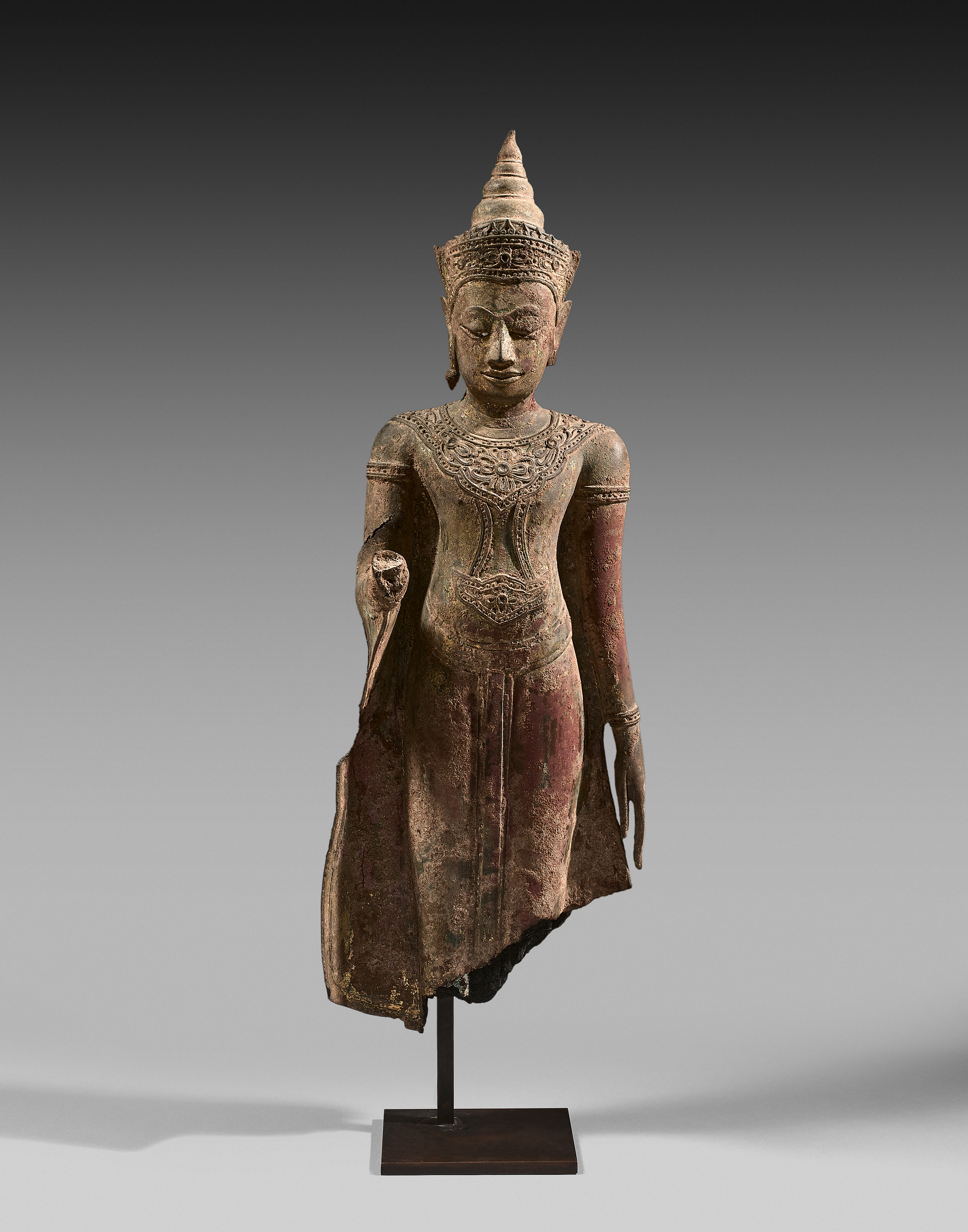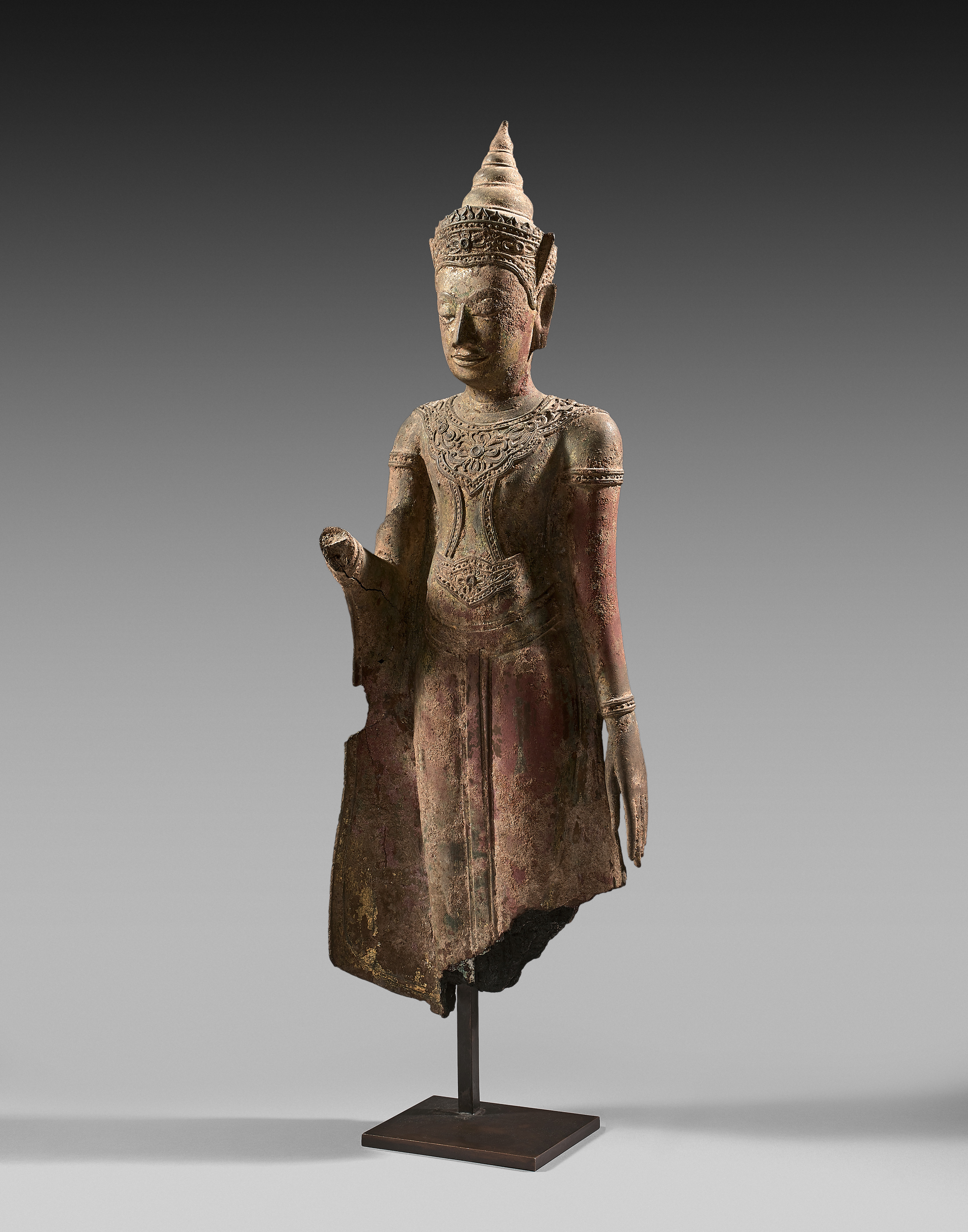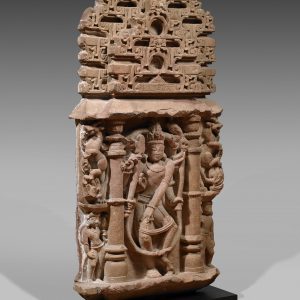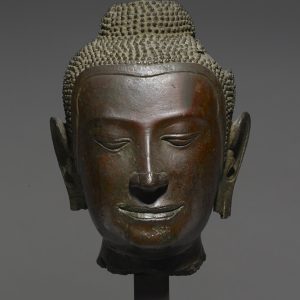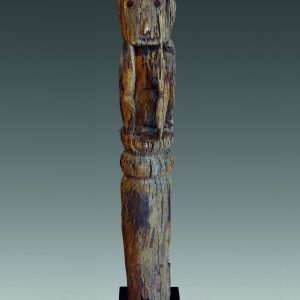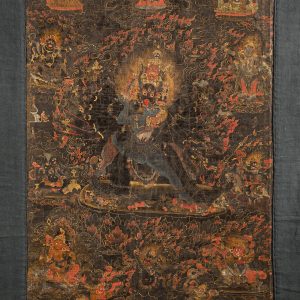Standing Buddha
Gilded bronze
Thailand
Circa 17th century, Ayutthayā kingdom (1350-1767)
H. 50 cm or 19 ¾ in
Description
This beautiful Thai Buddha is an amazing example of refinement. Measuring 50 cm (or 19 ¾ in) in height and made of gilded bronze, it is from the kingdom of Ayutthayā (1350-1767) and more specifically from the 17th century. The underlying layer of red color that seems blending in with the brown-green color of the bronze and with the many traces of gilding give together a superb visual effect.
Śākyamuni Buddha, the historical Buddha, is here depicted standing, with crown and jewels, as the “universal ruler” (cakravartin). With his right hand he is sketching the “no fear” gesture (abhaya-mudrā), while his left arm is stretched out to the side. This iconography of cakravartin Buddha was expanding rapidly at that time, both for conceptual and pietist reasons and for its extremely decorative nature. It is indeed certain that the ornaments of this Buddha are particularly rich and that they create an aesthetic of great beauty.
We particularly appreciate the elegance of the attitude, the stylization of the silhouette, the mix of colors and the abundance of jewelry. Everywhere intricate floral and beaded designs adorn the rich jewels of the Blessed One: a large breast plate covers his chest and the central cabochon is nicely reproduced on the beautiful crown. Representations of beads are omnipresent, even on the various wristbands and armbands. The hair is braided into a high pyramidal topknot, the end of which has been fortunately preserved. As for the face, it perpetuates, yet modifies, the Sukhothai style by making it softer. The nose, for instance, is less prominent, the mouth more smiling and the lips fuller. The eyes were formerly inlaid with mother-of-pearl, as evidenced by a small fragment preserved on the right eye.
Provenance: Private collection, France, since 1967.

